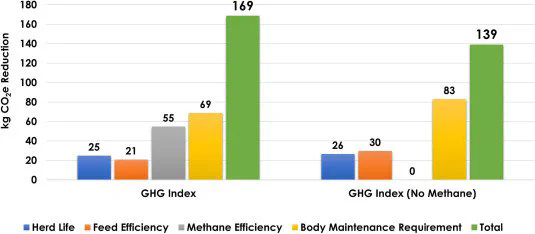Breeding for sustainability: Development of an index to reduce greenhouse gas in dairy cattle

Genetic selection strategies in dairy cattle breeding can effectively reduce greenhouse gas (GHG) emissions with minimal additional cost or labor. This can be achieved by selecting for specific traits like methane emissions or by using selection indexes that combine economic and environmental goals. Canada is at the forefront, having released the first methane breeding value and a GHG index, which includes traits like Methane Efficiency and Body Maintenance, leading to an estimated reduction of 168 kg CO₂e per cow per year. Other countries such as Spain, the Netherlands, and Denmark are also developing methane estimated breeding values (EBVs). The inclusion of direct methane traits in selection indexes is crucial, as omitting them can lead to unfavorable genetic outcomes. The adoption of GHG-focused breeding is growing, particularly in high-income countries, and would benefit further from the development of transparent, auditable methods to measure emissions reductions from genetic improvements.